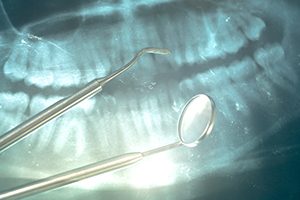 X-rays are critical to the practice of dentistry. And the benefits are profound. But dentists are sometimes guilty of dismissing patient concerns, as in, “Don’t worry, you’ll be fine.”
X-rays are critical to the practice of dentistry. And the benefits are profound. But dentists are sometimes guilty of dismissing patient concerns, as in, “Don’t worry, you’ll be fine.”
We do believe the judicious use of X-rays is in our patients’ best interests. But patients deserve to know why.
Radiography begins
Wilhelm Roentgen, fiddling around with electricity and photographic plates one day in 1895, found a wave that could photograph the invisible. When he realized he was seeing the bone inside his arm, he took a closer look at this mysterious “X” ray.
In New Orleans, just days after the discovery was made, a dentist Edmund Kells ordered equipment to build the first X-ray in America—for use in his dental practice.
From the very beginning, dentists have guided the evolution of radiography. We know it well.
How X-rays work
Most of us have experienced X-rays at the dentist’s office. A ray of photons is emitted by that familiar cylinder (or cone) placed on the cheek, and the film is held inside the mouth to receive the image.
Bone and teeth absorb more photons than soft tissue, so their image is captured with clarity.
The amount of energy absorbed by oral tissue is a “dose” of radiation.
Just how much radiation?
There is, of course, radiation everywhere. We’re bombarded with cosmic radiation, and natural radioactive elements pepper the earth’s surface.
The unit of measurement for X-rays is called, aptly enough, a roentgen (r). It’s been determined that 10r is a permissible dosage for the first 30 years of life. Full mouth X-rays rack up 0.0025r. Based on these numbers, if you had 4000 full-mouth X-rays, you’d be crazy, but you’d be healthy.
While we wish we could achieve zero exposure, there is no known alternative to X-rays for diagnosis in dentistry.
We work with X-rays every day—they are our “eyes.” There would be a very different kind of dentistry without them.
Exposure to dental X-rays as compared to other sources
| Lower GI X-ray series | 0.85r |
| Upper GI X-ray series | 0.64r |
| Radium dial wristwatch, worn 15 years | 0.05r |
| 1 Chest X-ray | 0.01r |
| Full-mouth Dental X-rays | 0.0025r |




Comments are closed.